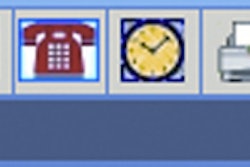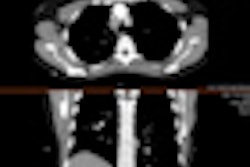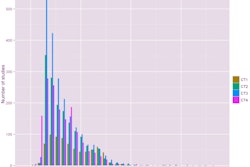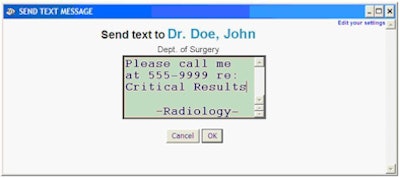
A text paging application embedded in PACS software can provide a simple and inexpensive means of notifying referring physicians of critical imaging results, according to researchers from Tripler Army Medical Center in Honolulu.
The Tripler team found that the application, which enables radiologists to send alphanumeric messages directly from the PACS workstation without having to manually look up physician paging rosters or use the telephone, increased radiologist productivity and improved communication of critical results.
"With a little ingenuity and existing communication technologies, [radiologists] can facilitate communication with our referring physicians and comply with National Patient Safety Goals and American College of Radiology [ACR] guidelines using simple, economic, and efficient means," resident physician Salvatore Labruzzo, DO, told AuntMinnie.com.
Labruzzo presented his institution's experience with the paging application at the annual meeting of the American Roentgen Ray Society (ARRS) in May.
Communication of critical results is an important aspect of medicine, particularly in radiology. With the Joint Commission National Patient Safety Goals and ACR guidelines both calling for efficient communication of critical imaging findings, the Tripler team sought to streamline the process for radiologists by developing a method to improve timeliness of critical results notification, Labruzzo said.
They developed a carrier-agnostic SMS-capable paging program that pulls contact information from their hospital's structured query language (SQL) database, allowing alphanumeric pages to be sent directly to the SMS gateways of multiple wireless telecommunication companies. Written in Adobe ColdFusion programming language, the application is a small, 2-KB HTML file that's embedded on each of the institution's radiology PACS workstations.
The developers "pinned" the application to the start menu and also assigned it a hotkey (* on the number pad) for even quicker launches, Labruzzo said. When radiologists want to page a referring physician with critical results, they click on the paging application icon or use the hotkey. Users can search for physicians by their first or last names as well as fragments of their pager number.
"The application works through a single port in the virtual network, pulls the desired physician's pager or cell phone number from the hospital's database, and sends a text message using SMS technology," Labruzzo said. "The message is delivered almost instantly."
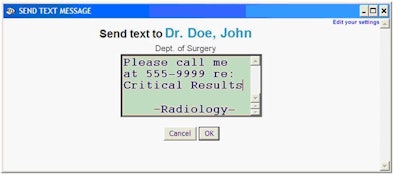 |
| Sample text message from PACS paging application. Image courtesy of Salvatore Labruzzo, DO. |
The application supports messages of up to 240 characters in length, and it can send them to one or more contacts as well as predefined groups.
To gauge user opinion on the application, the Tripler team conducted an anonymous survey with eight questions on a five-point grading scale. Eighty-six percent of the 25 responses were positive, according to the researchers.
When asked about the application's impact on patient care and productivity, 88% of the responses were positive, while only 4% were negative. The other responses were neutral.
In addition, all 13 residents who responded to the survey believed the application was easy to use, according to the group.
Any PACS within a hospital network should be able to use this type of application, Labruzzo said. However, the developers have decided not to make their particular implementation available to other institutions at this time.




